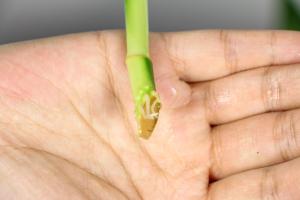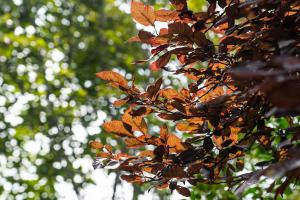Does Copper in Water Harm Plants?
Water is essential for plant growth and survival, but what happens when that water contains copper? Copper is a common metallic element found in rocks, soils, and water. While copper is an essential micronutrient for plant growth, excessive amounts can be toxic and harmful to plants. In this article, we will explore the effects of copper in water on plants.
How Copper Affects Plants
Copper is needed in small amounts for plant growth, particularly in the function of enzymes. However, excess copper can cause many negative effects, including leaf chlorosis, stunted growth, and reduced crop yields. It can also disrupt plant metabolism, leading to wilting, necrosis, and death. Copper toxicity can affect both the aerial parts of the plant and its roots.
How Copper Enters Water
Copper can enter water from natural sources such as rocks, soil, and groundwater. It can also come from human activities such as mining, industrial processes, and the use of copper-based pesticides and fertilizers. Copper can be found in both surface water and groundwater.
How Copper in Water Affects Plants
When plants absorb water containing high levels of copper, it can cause severe damage to their cellular processes. Copper can accumulate in plant tissues, leading to impaired photosynthesis and oxidative stress. This stress can cause changes in the plant's metabolism, eventually leading to reduced yields and plant death.
How to Detect Copper in Water
There are many ways to detect copper in water. Several commercial kits are available that allow you to measure copper levels in your water. You can also send a water sample to a laboratory for analysis. If you suspect that your plants are suffering from copper toxicity, it's essential to first test the water to confirm that copper is the culprit.
How to Prevent Copper Toxicity in Plants
Prevention is key when it comes to copper toxicity in plants. Here are some tips to help prevent excess copper from harming your plants:
Avoid using copper-based fertilizers or pesticides if possible.
Minimize soil erosion and runoff to prevent copper from entering surface water.
Test your water regularly for copper levels.
Avoid planting crops in areas where copper contamination is likely to occur.
Use plants that are known to tolerate high copper levels, such as certain types of grasses.
In Conclusion
Copper is an essential nutrient for plant growth but can be toxic in excessive amounts. If you suspect that copper in water is harming your plants, it's essential to test the water and take steps to prevent copper toxicity. By being proactive, you can help your plants thrive and avoid the negative effects of copper toxicity.

 how many times do yo...
how many times do yo... how many planted tre...
how many planted tre... how many pine trees ...
how many pine trees ... how many pecan trees...
how many pecan trees... how many plants comp...
how many plants comp... how many plants can ...
how many plants can ... how many plants and ...
how many plants and ... how many pepper plan...
how many pepper plan...































